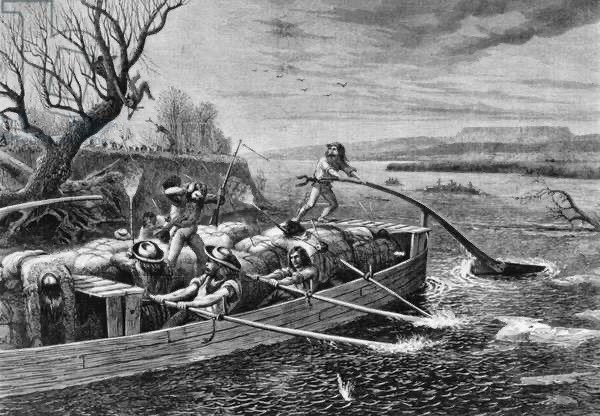Last updated: June 20, 2023
Article
Boats on the Missouri

Public Domain.
After the Lewis and Clark Expedition more and more trappers and traders entered the territory, using the Missouri as their highway to the many Native peoples of the Great Plains. Originally, large canoes or similar-sized vessels were the most common used. Soon, however, there were only two craft capable of carrying much of the cargo to the Native communities – Mackinaw boats and keeled boats.
According to Wood, Hunt, and Williams, authors of “Fort Clark and Its Indian Neighbors,” Mackinaw boats were flat-bottomed boats with pointed prows that could measure as much as 12 feet wide by 75 feet long. The design came from the Great Lakes region and was introduced to the Missouri River in the early 19th century. Mackinaws were rowed or poled by a five- or six-man crew (but carried a sail, just in case the winds cooperated).
More popular were the flat-bottom keeled boats, similar to that of the Corps of Discovery– it was either pulled upstream at the end of a long rope, poled by sheer muscle power, or sailed when the winds happen to be in the correct direction. These larger vessels could carry as much as 20 to 30 tons of cargo.
The fur companies began to replace the labor-intensive boats as steamboats began proving their worth -- the first being the “Yellow Stone” in 1832 which successfully made it to Fort Union (near the mouth of the Yellowstone River, close to the present day North Dakota/Montana border). Mackinaw and keeled boats remained necessary to reach beyond the Yellowstone River, at least until “mountain boats,” modified steamers capable of navigating the Missouri’s shallow waters, were created. These shallow-draft vessels could progress all the way to Fort Benton, Montana, (another 400 river miles up the Missouri) where the goods and supplies would be unloaded onto wagons for transport to the final destinations throughout the west.
